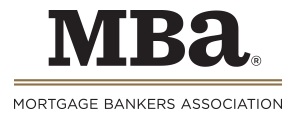WASHINGTON, D.C. – RealEstateRama – Home equity loan debt outstanding and borrower utilization rates declined in 2019, and mortgage lenders anticipate originations to fall again this year before increasing modestly in 2021. This is according to the Mortgage Bankers Association’s (MBA) 2020 Home Equity Lending Study on lending and servicing of open-ended home equity lines of credit (HELOCs) and closed-end home equity loans (HE loans).
“Households in 2019 remained hesitant to tap into the equity in their homes, despite several years of significant home-price appreciation resulting in sizable home equity gains,” said Marina Walsh, MBA’s Vice President of Industry Analysis. “The uncertainty from the COVID-19 pandemic will likely influence how originators manage risk, underwriting, and fulfillment in the home equity lending space. This only adds to the pre-existing challenges such as product competition and borrower preferences with unsecured financing and first-mortgage refinancing, rising costs of origination and servicing, and diminished tax benefits.”
Added Walsh, “Despite these challenges, home equity lenders expect to bounce back in 2021 and have ambitious plans for digital enhancements and initiatives to expedite the borrower experience. These initiatives are expected to help them better compete in the marketplace. Lenders anticipate annual HELOC originations to drop 2.9 percent in 2020 before growing 10.8 percent in 2021. Annual originations of HE loans are forecasted to increase by 0.5 percent in 2020 and 9.0 percent in 2021.”
Select findings from MBA’s 2020 Home Equity Lending Study (covering data through December 31, 2019) include: HELOCs
- HELOC debt outstanding dropped 6.4 percent on a weighted average basis from beginning to end-of-year 2019, as borrower utilization rates declined.
- HELOC utilization rates (dollar volume of outstandings compared to maximum credit facility) decreased over the period of 2016-2019, when examining the rates across origination vintage year cohorts for 2016, 2017, 2018, and 2019. For example, average utilization at origination was 38 percent for 2016, 36 percent for 2017, 35 percent for 2018, and 35 percent for 2019.
- For all active accounts, irrespective of origination year, average HELOC utilization was 44 percent in 2019, compared to 46 percent in 2018. The percentage of HELOC accounts with no outstanding balance as of year-end 2019 was 27 percent. The percentage of HELOC accounts funded to the contractual limit was 7 percent.
- The credit profile of the average HELOC borrower changed in 2019. The average FICO score grew to 774 from 762 in 2018. Average loan-to-value (LTV) for fundings at closing dropped to 24 percent in 2019 from 28 percent in 2018.
- Lenders of HELOCs expect annual originations to decrease 2.9 percent in 2020 but grow 10.8 percent in 2021. On a year-over-year basis, HELOC debt outstanding is expected to decline 3.0 percent this year and 2.8 percent in 2021.
HE Loans
- Home equity loan debt outstanding dropped 7.6 percent on a weighted average basis from the beginning to end-of-year 2019. The average life of the HE loan portfolio dropped from 92 months in 2018 to 90 months in 2019.
- The credit profile of the average HE loan borrower changed in 2019. The average FICO score grew to 759 from 749 in 2018. Average LTV for fundings at closing dropped to 30 percent in 2019 from 37 percent in 2018.
- Nonetheless, lenders of home equity loans expect annual originations to remain flat in 2020, and grow 9.0 percent in 2021. Home equity loan debt outstanding is expected to remain flat in 2020 and decrease 5.4 percent in 2021.
MBA’s Home Equity Lending Study for open-ended HELOCs and closed-end home equity loans was conducted in the spring of 2020. MBA collected data from 29 member companies – including large banks, community banks, credit unions, and independent mortgage companies – representing $62.3 billion in originations volume for 2019; $495.9 billion in maximum credit extended to borrowers as of December 31, 2019; and $227.7 billion in outstanding borrowings as of December 31, 2019. The report includes benchmarking data such as volume and product mixes, utilization rates, operational metrics, and growth expectations.
Media wishing to view a copy of the summary report should contact Adam DeSanctis at (202) 557-2727 or " data-feathr-click-track="true">. To purchase the report, call (202) 557-2916. The reports can also be purchased on MBA’s website by visiting www.mba.org/heloc.
CONTACT
Adam DeSanctis
(202) 557-2727


